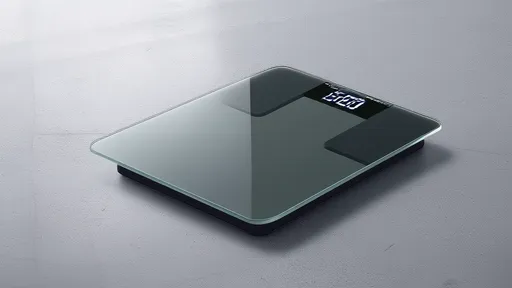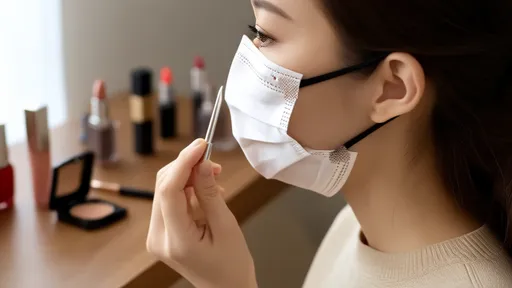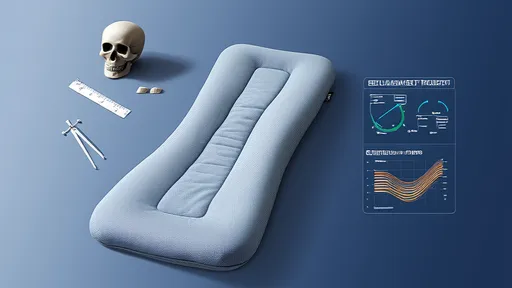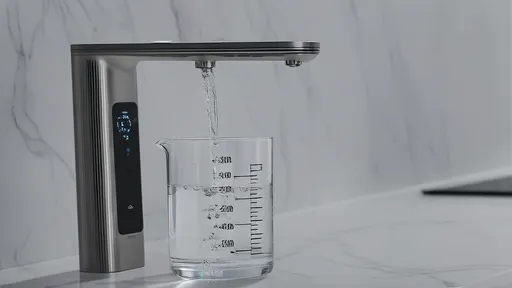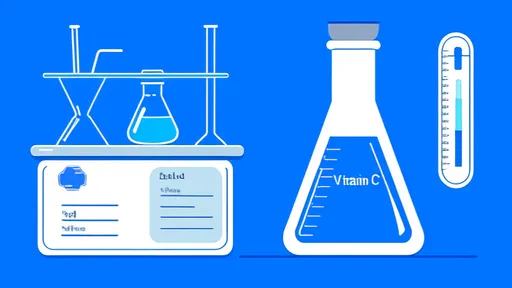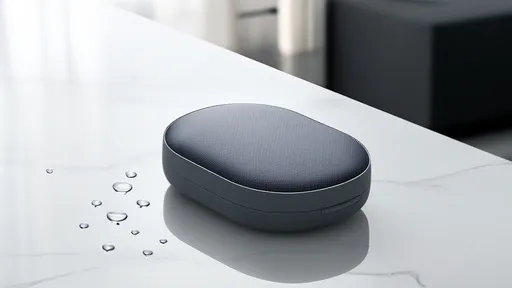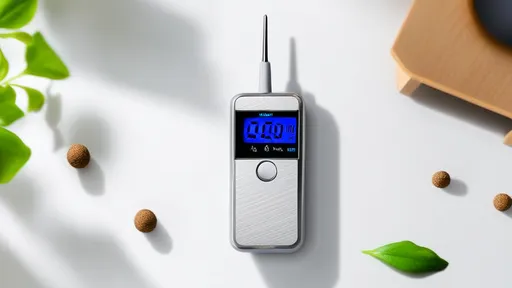The healthcare technology sector has witnessed remarkable advancements in recent years, with smart pillboxes emerging as a crucial tool for medication management. Among the various features that enhance their functionality, waterproofing stands out as a critical aspect that ensures durability and reliability. Manufacturers are increasingly focusing on innovative waterproofing techniques to address the challenges posed by accidental spills, humidity, and even complete submersion in water.
Why Waterproofing Matters in Smart Pillboxes
Smart pillboxes are designed to assist users, particularly the elderly and those with chronic conditions, in adhering to their medication schedules. These devices often incorporate electronic components such as sensors, alarms, and connectivity modules, which are highly susceptible to water damage. A single spill or exposure to moisture can render the device useless, disrupting the user's medication routine. Waterproofing not only extends the lifespan of the device but also ensures uninterrupted functionality, even in less-than-ideal environments.
The demand for waterproof smart pillboxes has surged as users seek devices that can withstand everyday accidents. For instance, a pillbox left on a bathroom counter or kitchen sink is likely to encounter water. Without proper waterproofing, such exposure could lead to circuit malfunctions, corrosion, or complete failure. This is particularly concerning for individuals who rely on these devices for critical medication reminders.
Innovative Waterproofing Techniques
To tackle these challenges, manufacturers are adopting cutting-edge waterproofing technologies. One common approach involves the use of silicone seals and gaskets to create a barrier against moisture. These seals are strategically placed around openings such as battery compartments and charging ports, preventing water ingress while maintaining accessibility.
Another technique gaining traction is the application of hydrophobic coatings. These coatings repel water at a molecular level, ensuring that any liquid that comes into contact with the device beads up and rolls off. This method is particularly effective for protecting internal components without adding bulk to the design. Some high-end smart pillboxes even feature nano-coatings, which provide an invisible layer of protection while preserving the device's aesthetic appeal.
For devices that require higher levels of waterproofing, such as those intended for use in humid climates or by individuals with active lifestyles, manufacturers are turning to IP (Ingress Protection) ratings. An IP67 or IP68 rating, for example, guarantees that the device can withstand immersion in water up to a certain depth for a specified duration. This level of protection is achieved through a combination of sealed enclosures, waterproof adhesives, and reinforced seams.
Material Selection and Design Considerations
The choice of materials plays a pivotal role in the waterproofing of smart pillboxes. Traditional plastic casings, while lightweight, may not offer sufficient protection against moisture. As a result, many manufacturers are opting for high-grade polymers or even metal alloys that provide better resistance to water and corrosion. These materials are often paired with rubberized or textured finishes to enhance grip, reducing the likelihood of accidental drops into water.
Design also plays a crucial role in waterproofing. A well-designed smart pillbox minimizes the number of seams and openings where water could penetrate. For example, some models feature magnetic closures instead of traditional latches, eliminating the need for gaps that could let moisture in. Others incorporate wireless charging to avoid the need for exposed charging ports altogether.
User Experience and Practical Benefits
The integration of waterproofing features significantly enhances the user experience. For caregivers, it means fewer concerns about the device failing due to accidental spills or exposure to humid conditions. For users, it translates to peace of mind, knowing that their pillbox will continue to function reliably, regardless of the environment.
Moreover, waterproof smart pillboxes often come with additional features that complement their durability. For instance, some models include UV-resistant coatings to prevent damage from sunlight, while others are designed to float in water, making them easier to retrieve if dropped into a sink or bathtub. These thoughtful additions further solidify the device's role as a dependable companion in medication management.
Future Trends in Waterproofing Technology
As the market for smart pillboxes continues to grow, so does the innovation in waterproofing technologies. Researchers are exploring self-healing materials that can automatically repair minor cracks or breaches in the device's casing, further enhancing its longevity. Another promising development is the use of biodegradable waterproof coatings, aligning with the growing demand for eco-friendly healthcare products.
Wireless technologies, such as Bluetooth and NFC, are also being optimized to function seamlessly within waterproof enclosures. This ensures that users can still benefit from connectivity features without compromising the device's resistance to water. The convergence of these advancements is set to redefine the standards for smart pillboxes, making them more robust and user-friendly than ever before.
Conclusion
Waterproofing is no longer a luxury but a necessity for smart pillboxes, given their critical role in medication adherence. Through innovative materials, advanced coatings, and thoughtful design, manufacturers are addressing the vulnerabilities associated with water exposure. As technology continues to evolve, we can expect even more sophisticated solutions that will further enhance the reliability and durability of these essential healthcare devices.
The hum of idling engines, the faint scent of exhaust, and the endless sea of brake lights stretching toward the horizon—highway traffic jams are an inevitable reality for millions of drivers. While being stuck in gridlock is frustrating, it also presents an unexpected opportunity: a chance to stretch, move, and counteract the stiffness that comes from prolonged sitting. For those who find themselves trapped in slow-moving or stationary traffic, a few simple stretches can make the wait far more bearable—and even beneficial for the body.
In the ever-expanding world of health supplements, choosing the right formulation can be as crucial as selecting the active ingredients themselves. The physical form of a supplement – whether it’s a capsule, tablet, liquid, or powder – influences not just how we take it, but how effectively our bodies absorb and utilize its nutrients. For consumers navigating this landscape, understanding these nuances can mean the difference between a product that works and one that merely sits on the shelf.
When it comes to achieving accurate weight measurements, the importance of placing your scale on a level surface cannot be overstated. Many users overlook this critical aspect, assuming that any flat area will suffice. However, even minor imbalances can lead to significant discrepancies in readings. Whether you’re using a digital or mechanical scale, ensuring proper ground alignment is essential for consistency and reliability.
The humble nose wire in face masks often goes unnoticed, yet it plays a pivotal role in achieving that perfect fit. While most consumers focus on filtration efficiency or breathability, the subtle art of nose bridge shaping remains an underappreciated aspect of mask-wearing. Mastering this technique can transform an ordinary mask into a customized protective barrier that seals tightly without causing discomfort.
The growing reliance on digital screens has led to an increased demand for products that claim to protect our eyes from harmful blue light. Among these, blue light screen protectors have gained significant popularity. These thin films, applied directly to the screens of smartphones, tablets, and computers, promise to filter out the high-energy blue light emitted by displays. But how effective are they really? A series of tests were conducted to evaluate their performance, and the results provide valuable insights for consumers.
The quest for the perfect night's sleep has led to numerous innovations in bedding technology, with memory foam pillows standing out as one of the most revolutionary. Unlike traditional pillows, memory foam adapts to the contours of the head and neck, providing customized support. However, not all memory foam pillows are created equal, and selecting the right height is crucial for optimal comfort and spinal alignment. The concept of a height adaptation formula for memory pillows has gained traction among sleep experts, offering a scientific approach to personalized sleep solutions.
The water purification industry has grown exponentially in recent years, driven by increasing awareness of water quality and health concerns. Among the various factors consumers consider when purchasing a water purifier, the flow rate—or the speed at which clean water is delivered—plays a crucial role. Unlike technical specifications such as filtration accuracy or contaminant removal rates, the flow rate directly impacts daily usability. A slow flow rate can frustrate users, while an excessively fast one might raise doubts about filtration effectiveness. Striking the right balance is essential for both manufacturers and consumers.
The running shoe industry has quietly undergone a quiet revolution in recent years, with manufacturers introducing innovative wear indicators that go far beyond the traditional "check the soles" advice. These new systems are transforming how runners monitor their footwear, potentially preventing injuries and extending the life of their gear. What began as simple tread patterns has evolved into sophisticated visual and tactile warning systems that communicate exactly when shoes need replacement.
The process of verifying organic certification codes through official websites has become increasingly important for consumers seeking authentic organic products. With growing concerns about food authenticity and labeling accuracy, understanding how to navigate these verification systems provides peace of mind and ensures purchasing decisions align with personal values.
When it comes to maintaining a healthy lifestyle, vitamins and supplements play a crucial role. However, many people overlook an important aspect of their efficacy: their shelf life after opening. Unlike unopened bottles, which have a clear expiration date, once a vitamin container is opened, its potency and safety can degrade faster than expected. Understanding how to calculate the post-opening shelf life of vitamins is essential for ensuring you reap their full benefits.
The science behind sun protection has evolved significantly over the years, and one of the most critical advancements has been the development of UPF (Ultraviolet Protection Factor) testing for sun-protective fabrics, including umbrellas. Unlike sunscreen, which is measured by SPF, UPF evaluates how effectively a fabric blocks ultraviolet radiation. For those who rely on sun umbrellas as their primary defense against harmful UV rays, understanding UPF testing methods is essential.
The healthcare technology sector has witnessed remarkable advancements in recent years, with smart pillboxes emerging as a crucial tool for medication management. Among the various features that enhance their functionality, waterproofing stands out as a critical aspect that ensures durability and reliability. Manufacturers are increasingly focusing on innovative waterproofing techniques to address the challenges posed by accidental spills, humidity, and even complete submersion in water.
For families caring for elderly loved ones with dementia or mobility challenges, GPS-enabled shoes have emerged as a game-changing safety solution. These innovative footwear options blend discreet tracking technology with everyday comfort, offering peace of mind without compromising dignity. As the silver tsunami reshapes demographics globally, such assistive technologies are transitioning from luxury to necessity in elder care.
In recent years, formaldehyde detectors have become essential household items for health-conscious families. However, the market is flooded with products of varying quality, making it challenging for consumers to distinguish between reliable devices and potential scams. Understanding where these detectors commonly fail can save buyers from wasting money on ineffective tools and protect their families from inaccurate readings.
For health-conscious individuals, tracking body composition has become an essential part of daily routines. Among the various tools available, smart body fat scales have gained significant popularity due to their convenience and ability to provide detailed metrics beyond just weight. However, to obtain the most accurate readings, understanding the optimal conditions for measurement is crucial—particularly when it comes to timing and preparation.


